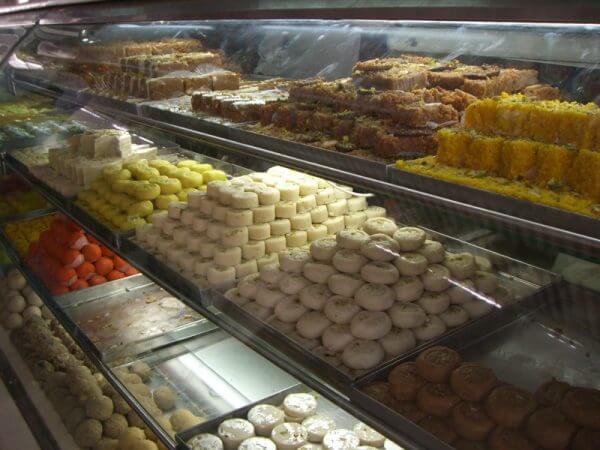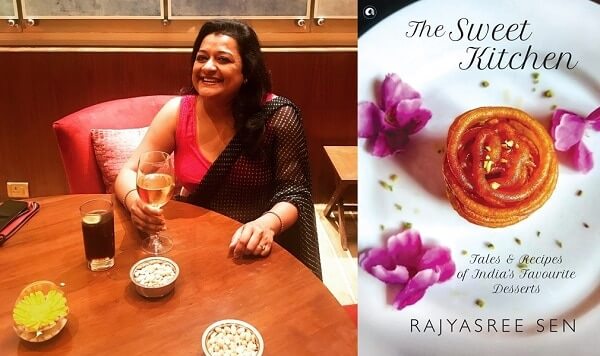A food columnist for years at Wall Street Journal India, Rajyasree Sen has written columns on food for a variety of publications and also scripted many food shows for Fox, Nat Geo and Discovery.
Thus, when approached to write on the history and cultural influences on Indian sweets – a topic which surprisingly hasn’t been written about in detail in any one book – the outcome presents readers with some interesting anecdotes, historical facts and tid-bits about sweets in India, and introduces them to some sweets which they might not be familiar with.
“I’ve been writing on food for a while now, almost 15 years I’d say,” Sen explained. “And it all started with me opening my Bengali and Anglo-Indian restaurant, Brown Sahib in New Delhi in 2007 (it shut down a decade ago). The thought behind the restaurant was to serve authentic Calcutta cuisine and to replicate some of the dishes I had grown up eating at home – keema chops, stuffed crabs, smoked hilsa, prawn malai curry. I have a background in journalism and with my interest in cooking, ingredients and in the history of foods and flavours, it was only natural that I’d be writing on food.”
Her book The Sweet Kitchen – Tales & Recipes of India’s Favourite Desserts, published by Aleph, required a great deal of research, which uncovered fascinating historical facts. For instance, which desserts must we thank the Persians, the Mughals, the Portuguese, and the French for?
While Sen knew that a sweet had been created for Lady Canning in Bengal, she had no idea which Mughal emperor to thank for bringing halwa to India, or the Sikh connection to the creation of kaju barfi. She also tries to demystify the very controversial question of whether Bengal made the rosogolla first, or if the credit goes to Odisha, and discovers that daulat ki chaat, an airy, churned milk dessert available only during the cold winter of North India, actually has a Mughal origin.
Beginning with ‘Sandesh: Muse of the Bengal Renaissaince’, Sen takes the reader through 13 chapters to discover rosogollas, gulab jamuns, mishti doi, shrikhand, and other tasty treats from Indian cuisine.
Each of these chapters contains a short introduction of the sweet, details of the ingredients, the method of making, the preparation time and the number of people it serves.
READ ALSO: Jalebi three ways (recipe)

Sen also discovered that sweets are not strictly vegetarian – they can also be made with meat and eggs.
“For example, there are some non-vegetarian variants of halwa such as gosht halwa and ande ka halwa which are worth mentioning,” she said.
“Giving a whole new meaning to the word ‘sweet meat’, the gosht halwa is a translucent, succulent dessert soaked in ghee and cooked with tender lamb mince. The recipe is referred to in old Persian recipe books, and khansamas who worked in Old Delhi homes have recreated the dish from memory, turning out a delightful dessert prepared by cooking meat for hours by stirring it with milk and sugar till it amalgamates into a thick halwa which is then flavoured with saffron and cardamom. This preparation is supposed to have originated in Rampur, Uttar Pradesh.
“Ande ka halwa, or egg halwa, is made by cracking eggs into a pan with ghee, milk, sugar, and dried fruits. The mixture is cooked until a thick custard forms, which is then sprinkled with saffron. Most Indian halwas, however, use grains, such as the suji halwa and atta halwa,” Sen explained.
She earnestly hopes the book will serve the purpose of breaking down barriers. “Like all good meals are supposed to do, this book should bring people to the same table and help create an understanding and appreciation of other communities and peoples. After all, if we love their foods, we can surely extend some affection towards them as well,” she elaborated.
What next? What will her next book be on?
“Who knows, maybe I’ll write a historical espionage! I’d love to write a book on Bengali cuisine with recipes. Let’s see, time will tell,” Sen concluded.
Vishnu Makhijani, IANS
READ ALSO: Indian spices and Australian botanicals: a unique gin collaboration




